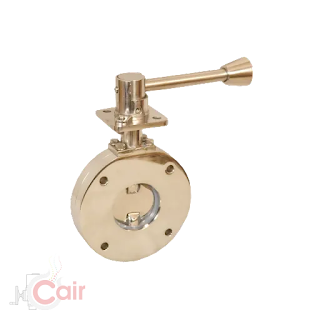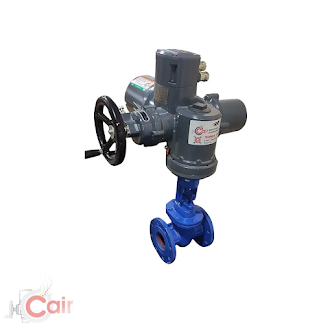The Different Types of Motorized Valves and How They Work
What are the Most Common Types of Motorized Valves?
Motorized valves are essential in many industrial, commercial, and residential applications. They are used to control the flow of fluids through pipelines, and their automation makes them ideal for use in situations where manual operation is not feasible. There are several types of motorized valves, each with its unique features and benefits.
The most common types of motorized valves are ball, globe, and butterfly valves. Ball valves are the most commonly used motorized valve due to their simple design and ease of operation. They consist of a spherical disc that rotates within the valve body, controlling fluid flow through the pipeline.
Globe valves are another popular type of motorized valve. Their spherical body and linear motion characterize them. They are commonly used in applications where a high degree of precision is required, such as in HVAC systems and chemical processing plants.
Butterfly valves are motorized valves that consist of a circular disc that rotates within the valve body. They are commonly used in large-scale applications where high flow rates are required, such as in water treatment plants and wastewater treatment facilities.
Other types of motorized valves include diaphragm valves, pinch valves, and solenoid valves. Diaphragm valves use a flexible diaphragm to control fluid flow, while pinch valves use a pinching mechanism to restrict or allow fluid flow. Solenoid valves open or close the valve using an electromagnetic coil, making them ideal for remote applications.
Overall, the type of motorized valve used depends on the specific application requirements, such as the flow rate, pressure, and type of fluid transported. Understanding the different types of motorized valves and their features can help ensure the correct valve is selected for the job.
How do Motorized Valves Work?
Motorized valves regulate the flow of fluids, such as water or gas, in pipelines. They operate through an automated mechanism, which allows them to be remotely controlled and adjusted. The basic working principle of motorized valves involves an actuator that receives signals from a controller to open or close the valve. The actuator can be powered by electricity, pneumatic, or hydraulic pressure.
When the signal is received, the actuator moves the valve mechanism, which controls fluid flow through the pipeline. The valve mechanism can take different forms, depending on the type of valve being used. For example, ball valves have a spherical disc that rotates to control fluid flow, while globe valves have a linear motion mechanism that moves up and down to control the flow.
The actuator receives the signal to open or close the valve from a controller, a manual switch, or a programmable controller. Programmable controllers can operate the valve according to predetermined parameters, such as time, temperature, or pressure. They can also be set up to operate the valve remotely through a computer or mobile device.
Motorized valves are used in various applications, including heating and cooling systems, water treatment plants, and industrial manufacturing processes. They offer several benefits, including improved efficiency, accuracy, and reduced labor costs. Additionally, they can be used in hazardous environments, such as chemical processing plants, where manual operation is not feasible.
In summary, motorized valves use an actuator to open or close the valve mechanism, which controls fluid flow through a pipeline. They are operated by a controller, which can be a manual switch or a programmable device, and can be remotely controlled through a computer or mobile device. Understanding how motorized valves work can help users select the appropriate valve for their application requirements.
What Are the Benefits of Using Motorized Valves?
Motorized valves offer several benefits over traditional manual valves, making them an increasingly popular choice in various industries. Some key benefits of using motorized valves include increased efficiency, improved accuracy, and reduced labor costs.
One of the primary advantages of motorized valves is their ability to operate automatically without manual intervention. This allows them to respond quickly to flow rate or pressure changes, ensuring consistent performance and reducing the risk of downtime or equipment failure.
Motorized valves are also more precise than manual valves, allowing for more accurate fluid flow control. This is especially important in applications requiring precise flow control, such as in chemical processing or water treatment plants.
Another benefit of motorized valves is their ability to be remotely controlled through a computer or mobile device. This allows for greater flexibility, convenience, and improved safety in hazardous environments.
Motorized valves also offer cost savings over manual valves. They require less labor to operate and maintain, reducing labor costs and minimizing the risk of human error. Additionally, their automated operation can help optimize system performance, reducing energy consumption and operating costs.
The benefits of using motorized valves make them an attractive option for various applications. By providing increased efficiency, improved accuracy, and reduced labor costs, motorized valves can help improve system performance and reduce overall operating costs.
Are There Any Drawbacks to Using Motorized Valves?
While motorized valves offer many benefits, there are also some potential drawbacks. One potential drawback is their cost, as motorized valves are more expensive than manual valves. This can make them less cost-effective for smaller-scale applications, where manual valves may be sufficient.
Another potential drawback is the need for regular maintenance and repair. Motorized valves have more components than manual valves, requiring more frequent maintenance to ensure they operate reliably. Additionally, if a motorized valve does break down, repairing or replacing the motor can be more complicated and expensive than fixing a manual valve.
Motorized valves may also be more susceptible to electrical interference, which can cause them to malfunction. This can be a particular concern in industrial settings with high levels of electromagnetic interference.
Finally, there is the issue of power supply. Motorized valves require a power source, which can be challenging in remote or off-grid locations. In such cases, manual valves may be a better option.
While there are some potential drawbacks to using motorized valves, their benefits often outweigh these concerns. It is important to carefully consider the specific requirements of your application and weigh the costs and benefits of using motorized valves versus manual valves before making a decision.
How do I Choose the Right Motorized Valve For My Application?
Choosing the right motorized valve for your application involves considering several factors, including the type of fluid being transported, the flow rate, and the operating environment. Here are some key factors to consider when selecting a motorized valve:
Type of fluid: Consider the fluid being transported and its properties, such as temperature, pressure, and viscosity. This will help determine the material and design of the valve that is best suited for your application.
Flow rate: Determine the required flow rate for your application, as this will help determine the size of the valve and the type of valve mechanism needed.
Operating environment: Consider the operating environment, including the temperature, humidity, and presence of corrosive materials or other environmental hazards. This will help determine the material and design of the valve, as well as any additional features needed to protect it from environmental damage.
Control system: Determine the control system needed to operate the valve, such as manual control, programmable logic control (PLC), or a remote control system.
Budget: Consider the budget available for the valve and any associated installation and maintenance costs.
Manufacturer reputation: Choose a reputable manufacturer with a proven track record of producing high-quality motorized valves that meet industry standards.
Considering these factors, you can select the right motorized valve for your application requirements. It is also important to consult with an experienced valve supplier or engineer who can provide expert guidance and support throughout the selection and installation process.




Comments
Post a Comment